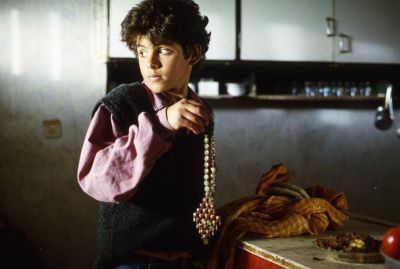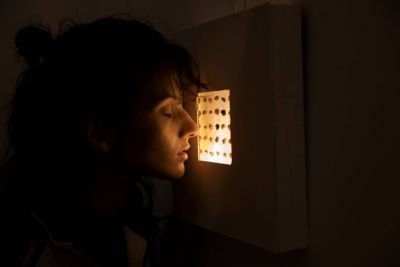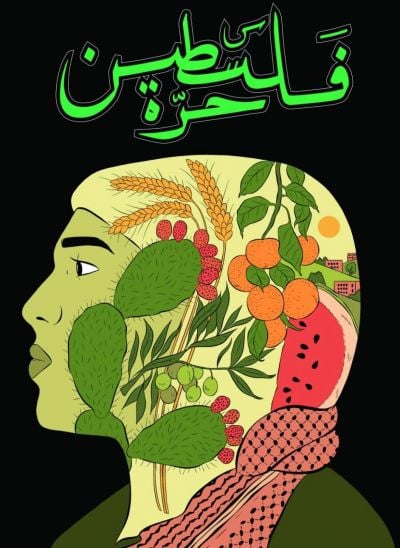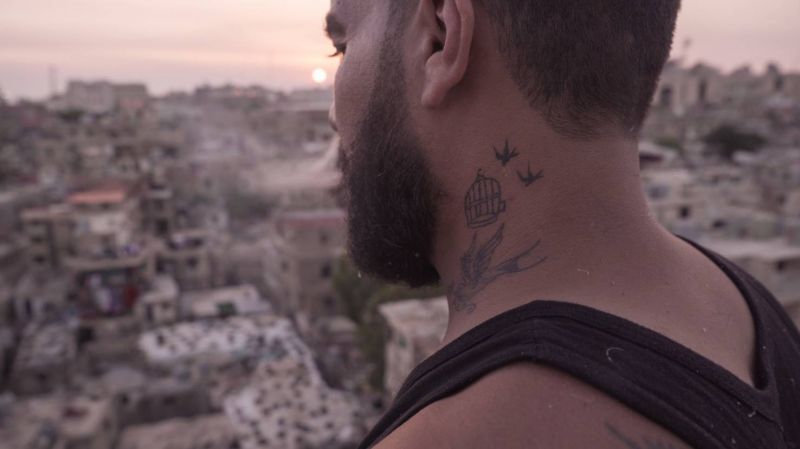
Abu Raas, 38, has a smoke as he looks out over Sabra from the top of a building in Shatila, from “In the Shadow of Beirut.” (Credit: Stephen Gerard Kelly).
BEIRUT — Film critics have been known to triage movies before viewing — scanning the production credits to get a sense of what to expect. If you IMDB “In the Shadow of Beirut,” you’ll come away reassured, finding a lauded director and producers with acclaimed work behind them. You may be wary too, noticing a divisive figure from the US political elite. Happily, the film will confirm some of these expectations. Others, happily, not.
An Irish-Lebanese-German co-production, “In the Shadow of Beirut” appeared on entertainment news feeds when Ireland announced the documentary would be its official submission for Best International Feature Film at the 2024 Academy Awards. Co-directed by Garry Keane and cinematographer Stephen Gerard Kelly, it is also in the running for the Best Feature Length Doc Oscar.
Kelly sat down for a screen-to-screen chat with L’Orient Today from New York, where his film was having a projection that evening. A few hours after that he was en route to Jeddah’s Red Sea Film Festival, where “In the Shadow of Beirut” had its MENA region debut a few days ago.
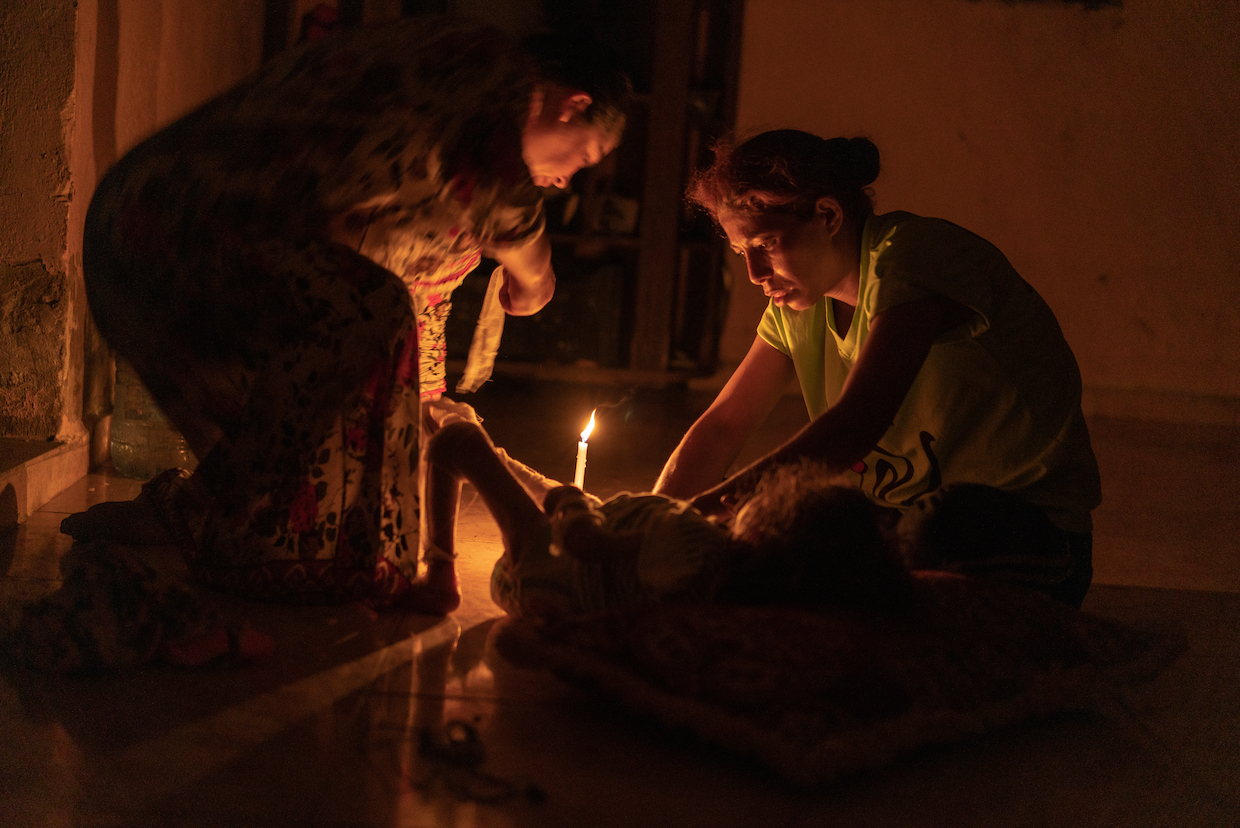 Rabih, left, changes the bandages of her daughter Sariya, 11, with the help of her sister-in-law, in their Sabra home, from “In the Shadow of Beirut.” (Credit: Stephen Gerard Kelly).
Rabih, left, changes the bandages of her daughter Sariya, 11, with the help of her sister-in-law, in their Sabra home, from “In the Shadow of Beirut.” (Credit: Stephen Gerard Kelly).
Kelly terms his debut film a “by-product” of five years he spent in Lebanon, starting in 2015, when he became friends with several families in Beirut’s Sabra neighborhood and the adjacent Shatila refugee camp. He didn’t come to make a movie, but to be with his partner, who does nonprofit work counseling teens. When he wasn’t busy with that or freelance photography assignments, he was learning.
“We spent a year and the year became five,” Kelly recalls. “They were like 20 [years] in suburban Dublin — extremely intense, learning precipitously every day, often avalanches of emotion and information.”
An atypical Western production
“In the Shadow of Beirut” has a surprisingly local focus. Over four years, Kelly and Keane follow four families and a few acquaintances who resided around Sabra-Shatila in 2018. The filmmakers’ humanist leanings emerge from their principal characters.
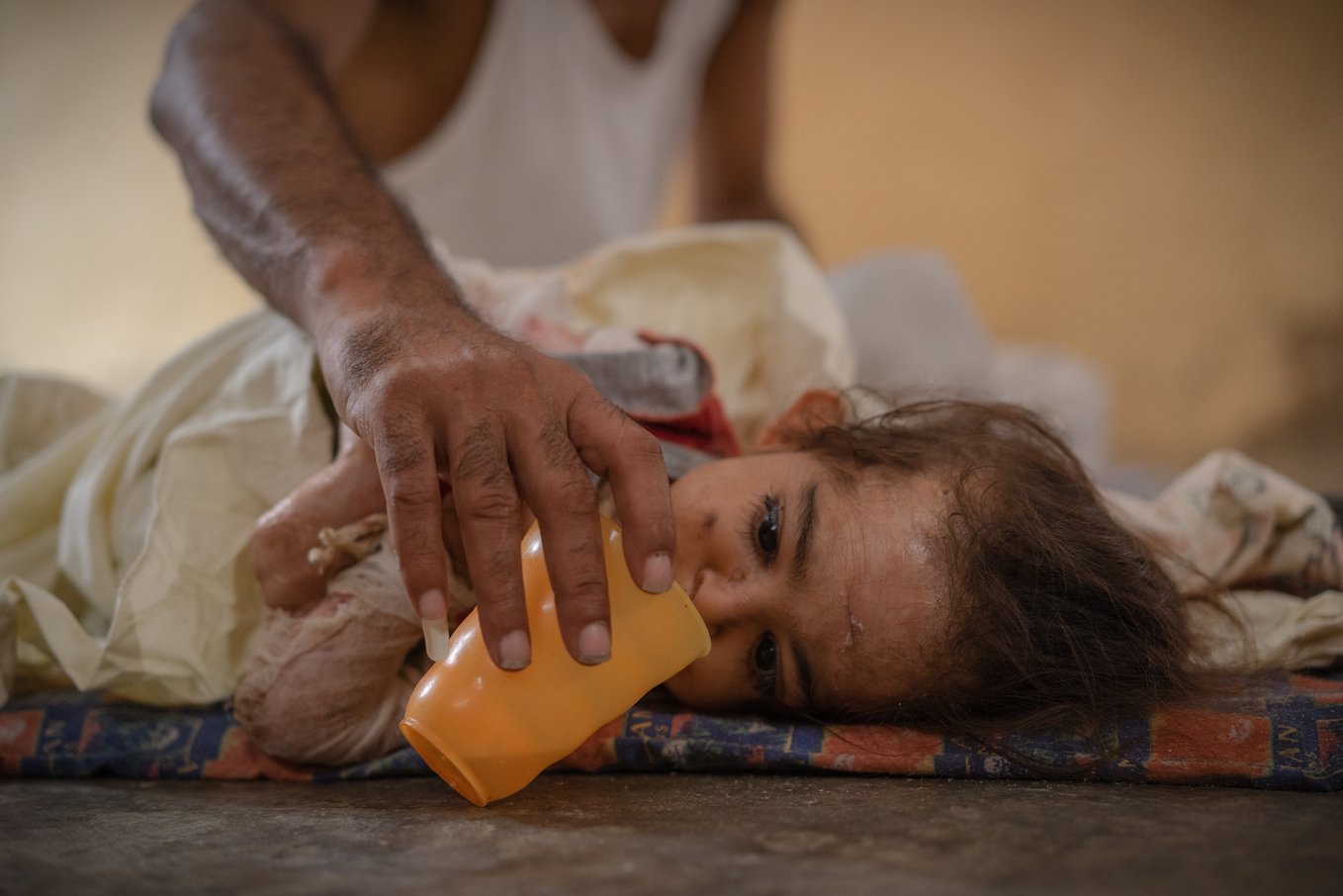 Sariya, 11, lies on the floor of her home as her father Kazim (Abu Turki) offers her water, from “In the Shadow of Beirut.” (Credit: Stephen Gerard Kelly).
Sariya, 11, lies on the floor of her home as her father Kazim (Abu Turki) offers her water, from “In the Shadow of Beirut.” (Credit: Stephen Gerard Kelly).
The doc opens with shots of Abu Ahmad Abeed, a little boy collecting street trash and dumping it in a neighborhood waste heap grazed by goats. His widowed mother Fatima fled to Lebanon with her three boys, finding affordable housing in Shatila. The entire family must work to get by and Fatima feels guilty that she can’t afford to send her sons to school. She fears that Abu Ahmad, her youngest, will fall into a life of street crime.
Ayman Kujeyje, his wife and five kids tend a sparsely stocked shop in Sabra. He’s Lebanese but his father was Syrian, which makes him and his kids foreign. He worries about raising daughters — especially his oldest, 13-year-old Sanaa, whom he forbids to leave the house lest the neighborhood boys lead her astray. Sanaa yearns for more freedom but, when a young man with some prospects proposes marriage, she respects her parents’ wishes and accepts.
Abu Turki Daher and his family are from Lebanon’s Dom (also known as Rom) community, pejoratively labeled “Nawar.” Family life centers on their little girl Sariya, whose ailments include water blisters that break on contact, leaving her body covered with open wounds that her parents must cover in gauze.
Abboudi Ziani has been imprisoned twice — once for armed robbery, once again for pushing drugs. Four years after his release, he’s 38 and has a little boy named Ali, but his criminal record makes it difficult to find a job. Making less than $10 a day working for a tattoo artist, Ziani worries about educating his son and when he loses his job, he falls into drug abuse.
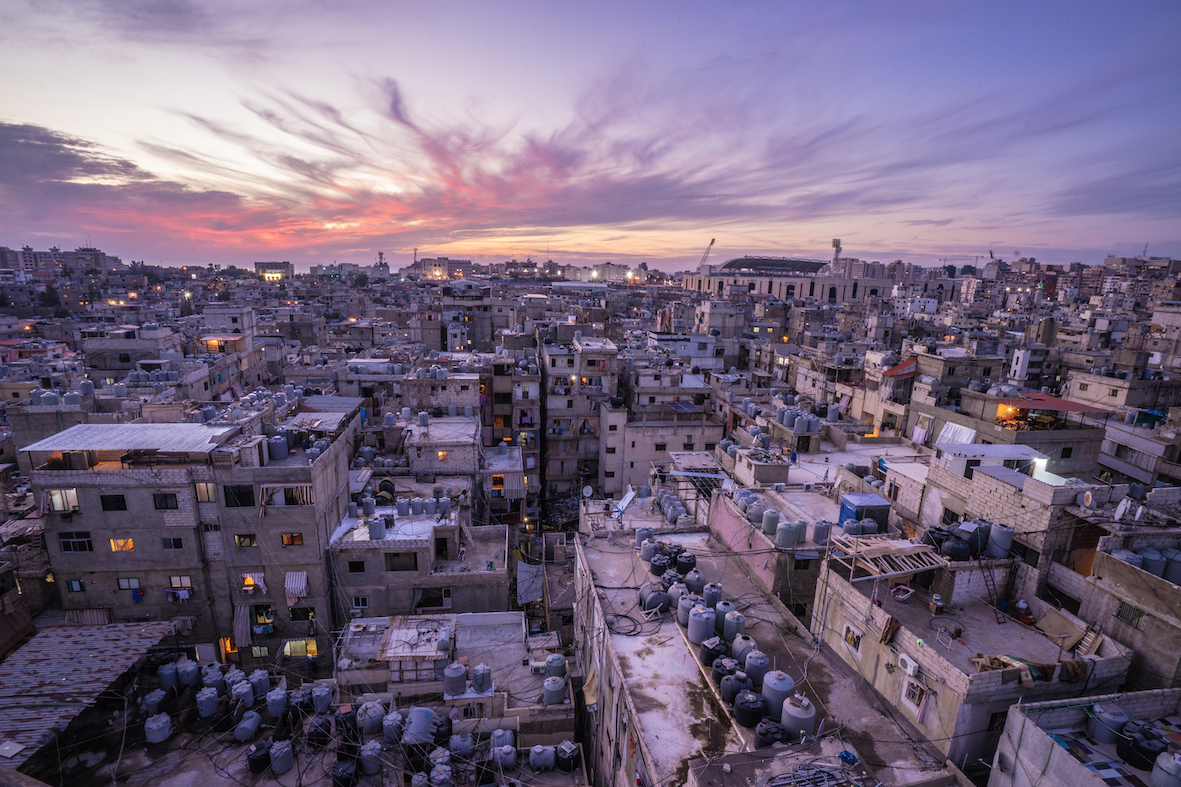 Shatila in the early evening, from “In the Shadow of Beirut.” (Credit: Stephen Gerard Kelly)
Shatila in the early evening, from “In the Shadow of Beirut.” (Credit: Stephen Gerard Kelly)
These families were already struggling in the relative stability of 2018. Lebanon’s 2019 economic and financial collapse pushed them further to the lower edge of the country’s widening wealth gap.
An array of traps await cinema examining the lives of desperately poor people. In the 1960s and ’70s, politically engaged filmmakers might document the downtrodden in order to accentuate the urgent need for progressive political action — prompting critics to accuse them of instrumentalizing the poor. More recent films that gaze upon destitute people through a moralizing liberal lens have been condemned as “poverty porn.”
The suffering in “In the Shadow of Beirut” can make it difficult to watch at times, but the filmmakers’ perspective is refreshingly free of judgment. Fatima Abeed’s sons must work for the family to scrape by, and she leaves Shatila for a more expensive rental in Tariq al-Jadideh to protect her kids. Ayman Kujeyje may not be completely transparent about why he encourages Sanaa to “try out” engagement at 13, but when her betrothed turns out to be a maniacally controlling drug user, he puts his daughter first.
The characters’ travails are also lightened by the film’s fine cinematography. Kelly is one of those inquisitive photographers who finds lyricism in the play of light through the canopy of electrical cables hanging over a narrow alleyway, or in a little girl sloshing pools of rainwater down a muddy footpath with a squeegee. He might be criticized for aestheticizing the poverty of his characters, were they not so convincingly human in their reserve and their candor. The filmmaker captures his humans up close, in ensemble and against the dense, chaotic sprawl of Sabra-Shatila, at street level and using a drone — a task complicated by the number of armed men minding the location’s several jurisdictions.
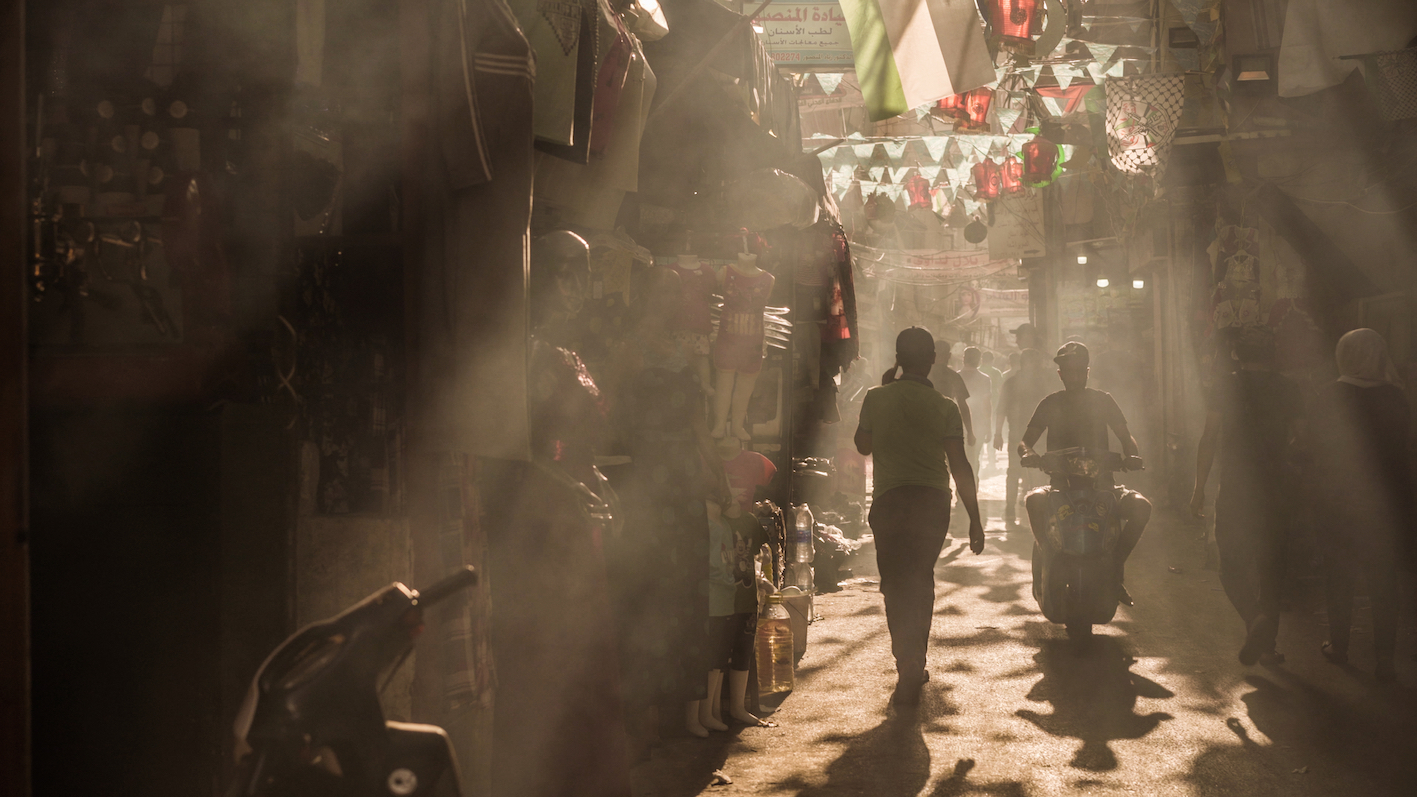 Sunlight filters through a Shatila alleyway, from “In the Shadow of Beirut.” (Credit: Stephen Gerard Kelly).
Sunlight filters through a Shatila alleyway, from “In the Shadow of Beirut.” (Credit: Stephen Gerard Kelly).
“I’d check with local security,” Kelly says. “I go, ‘Is it okay if I fly here? Now?’
“They go—” he pauses, “‘—sure.’
“I could easily go straight up and down over the street where I’ve asked, but once you go a few streets over, you’re into somebody else’s airspace. Say I move over Shatila. Sometimes people’d be up on the roof quickly and I’m waving ‘It’s me! It’s me over here!’ or else they’d be firin’ on me.”
“From the makers of ‘Gaza’”
“In the Shadow of Beirut” is produced by Brendan Byrne, who was behind Keane’s 2019 debut feature “Gaza,” which did well at Sundance and took treasure at several other festivals. Co-directed with cinematographer Andrew McConnell, “Gaza” is a nicely shot collage of Palestinians struggling to get by in the beleaguered territory — which has been much on the world’s mind since Oct. 7, 2023.
Keane and McConnell’s 2019 picture was shot against the backdrop of Palestinian civil activism in 2018, and Israel’s military response to it. Its characters include a little boy from a sprawling family who aspires to be a fisherman, an ambulance driver, a surfer and a young woman from a displaced middle-class family who studies cello. The directors remain behind the camera but some of their characters express sentiments critical of Hamas.
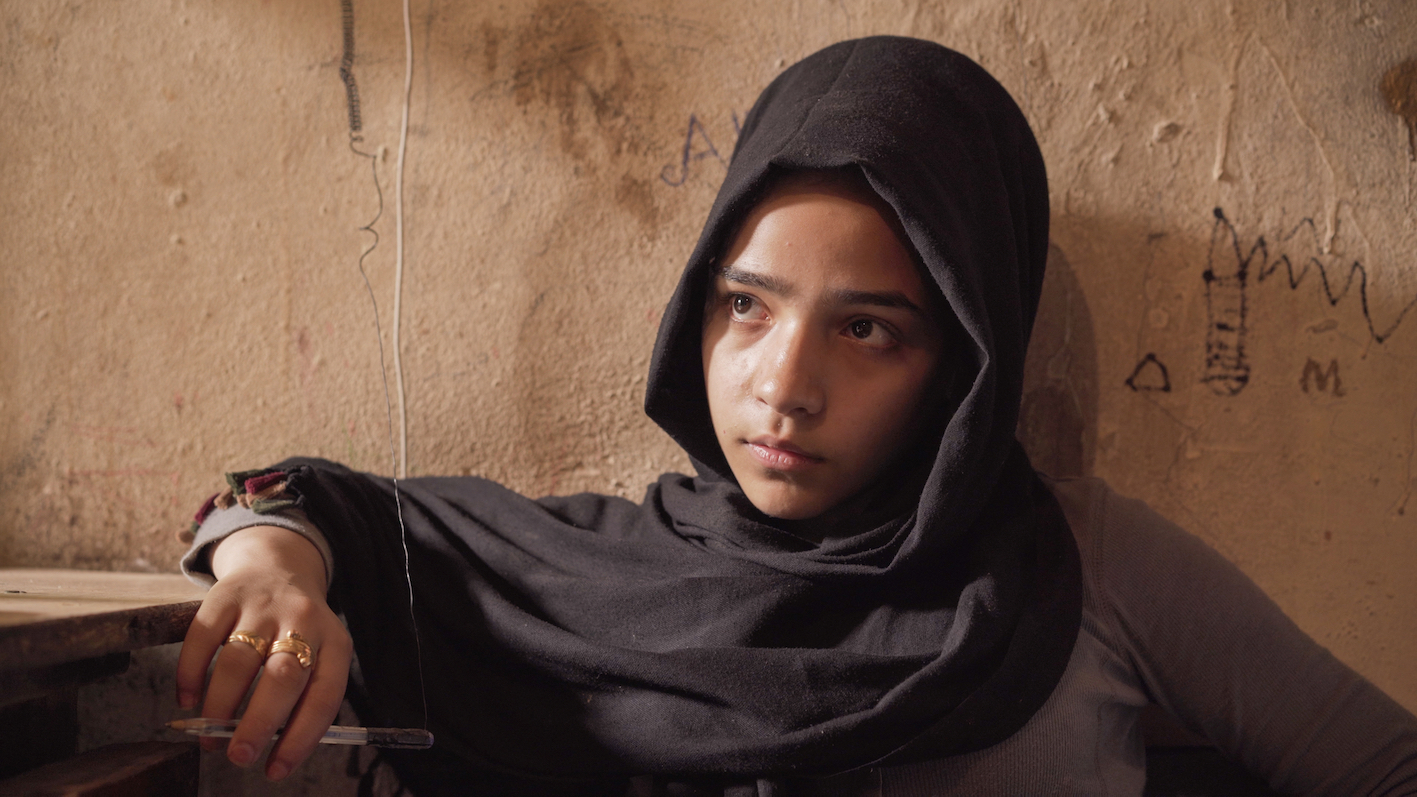 Sanaa, 13, in her father's small shop in Sabra, from “In the Shadow of Beirut.” (Credit: Stephen Gerard Kelly).
Sanaa, 13, in her father's small shop in Sabra, from “In the Shadow of Beirut.” (Credit: Stephen Gerard Kelly).
With its Shatila locations “In the Shadow of Beirut” might be perceived as a follow-up to “Gaza.” It isn’t. While both films are handsomely shot Irish-produced docs, Kelly and Keane’s effort is not “about” a Palestinian refugee camp. Of the four families, only one lived in Shatila. One significant character, Abu Arab Asali, is Palestinian.
Over the years Kelly actively filmed members of perhaps 10 families. He socialized with another 10 or more, but didn’t film them. After about four years of this immersion he sought feedback as to whether his footage could make a film. The first person he approached, he says, was Lebanese director-actor Nadine Labaki, who had just released “Capernaum,” her wildly successful, and contentious, 2018 feature-length fiction about destitute people in Beirut.
“I watched ‘Capernaum’ in the cinema, rockin’ like a baby in tears,” Kelly recalls, “seeing all the emotion that I was seeing myself and filming.”
Labaki connected Kelly with Abbout Productions, where Myriam Sassine took on the project as co-producer. He says Labaki also recommended he work with Zeina Aboul-Hosn, who cut the film with editor Iseult Howlett.
It was only later, he says, that he heard about “Gaza” and phoned Keane. Around six months after that first conversation Keane recommended he talk to Byrne.
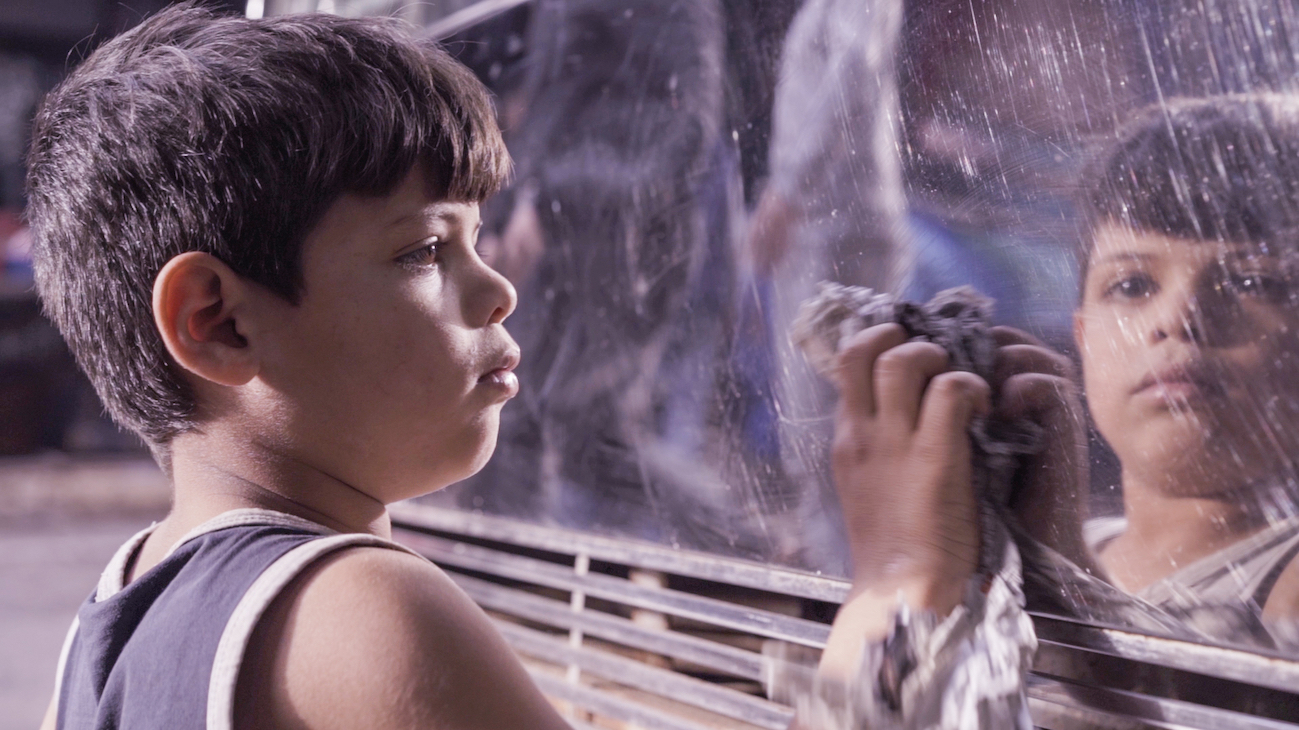 Eight-year-old Abu Ahmad Abeed at work, cleaning a window display in Shatila, from “In the Shadow of Beirut.” (Credit: Stephen Gerard Kelly).
Eight-year-old Abu Ahmad Abeed at work, cleaning a window display in Shatila, from “In the Shadow of Beirut.” (Credit: Stephen Gerard Kelly).
“Brendan has a lot of energy and is very determined,” he says, “so once he got involved, funding came in on more or less the same model that was behind ‘Gaza’ — Screen Ireland, [German public broadcaster] ZDF, [Franco-German cultural TV network] Arte.”
Keane’s contribution was in finding a narrative through-line in Kelly’s hundreds of hours of footage.
“It was just if I saw something, or there was something going on, or somebody asked me, or the light was nice, you know, that I’d shoot. Garry’s saying, ‘Look, this needs to work in an hour and a half. So we’re going to break it down into beats.’ We went back to Beirut twice, Garry and myself, for a few weeks and filmed with people to just fill in [the narrative] holes.”
It was Keane’s sense of the narrative that determined which of Kelly’s characters emerged from the rushes and the editing process.
“Doors were always opening and closing,” Kelly recalls of his cast of characters. Two mothers left Beirut [to Syria and Bangladesh] with their families, leaving their husbands in Beirut for work. One Lebanese friend, a vegetable seller married to an Ethiopian national, left the project after becoming involved in the risky business of dealing drugs, then weapons.
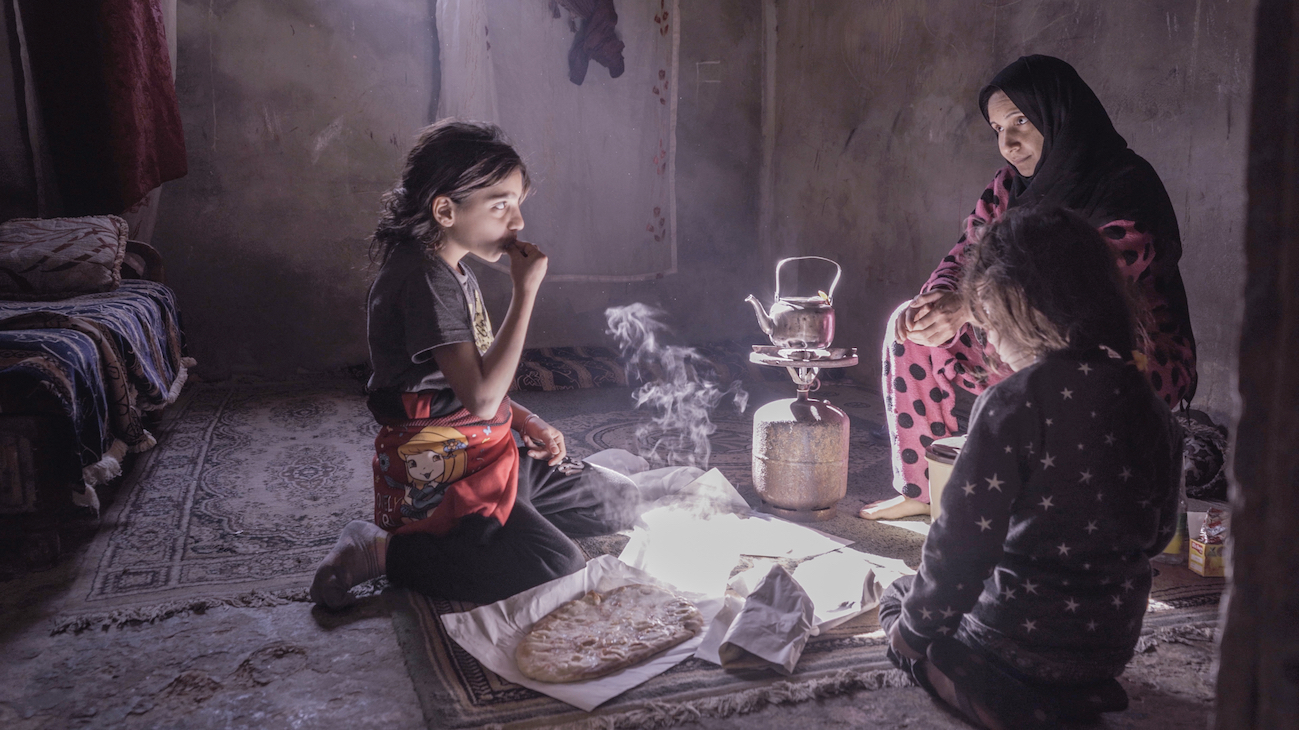 Hanan, nine, enjoys a breakfast of manaqish with her mother Ikram Kujeyje, 35, and sister in their place in Sabra, from “In the Shadow of Beirut.” (Credit: Stephen Gerard Kelly).
Hanan, nine, enjoys a breakfast of manaqish with her mother Ikram Kujeyje, 35, and sister in their place in Sabra, from “In the Shadow of Beirut.” (Credit: Stephen Gerard Kelly).
“There were three films” in the footage, Kelly says, “so we focused on children, on love among families and, you know, what you can show an audience in a 90-minute window.”
“Produced by Hillary Clinton”
The best-known names in the film’s production credits belong to two of the film’s executive producers — former US Secretary of State and presidential nominee Hillary Clinton and her daughter Chelsea, co-founders of Hidden Light Productions. Kelly says the company contributed to financing the film but had no say in the content.
Byrne showed the project to his colleague Siobhan Sinnerton, who had been Hidden Light’s executive producer on “For Sama,” the Oscar-nominated 2019 doc about the Syrian state’s siege of Aleppo, told from the perspective of a doctor’s family.
“I’d seen ‘For Sama.’ I loved it,” he says, explaining that the company’s contribution got the film made and the characters’ stories out there.
“I’m grateful for Hidden Light,” Kelly grins. “Part of our agreement is that they do want [the money] back if we ever make a profit. So bless their cotton socks.”
